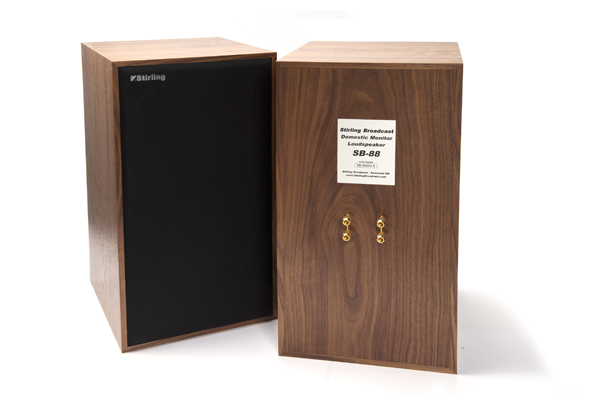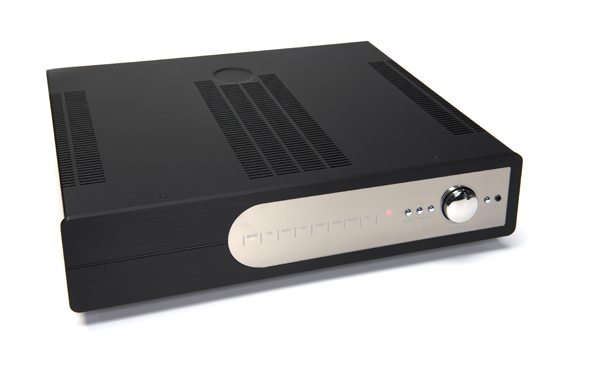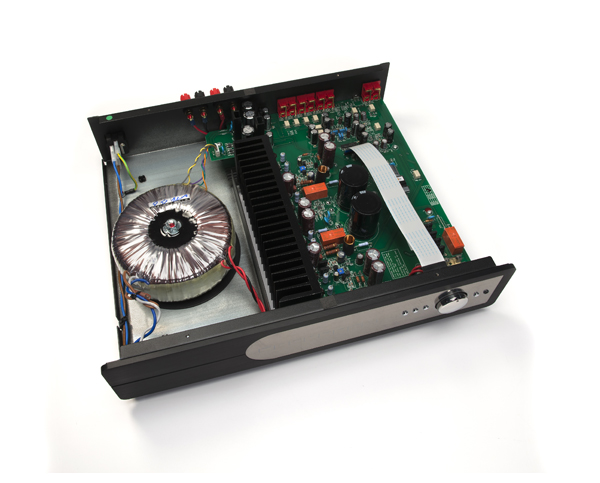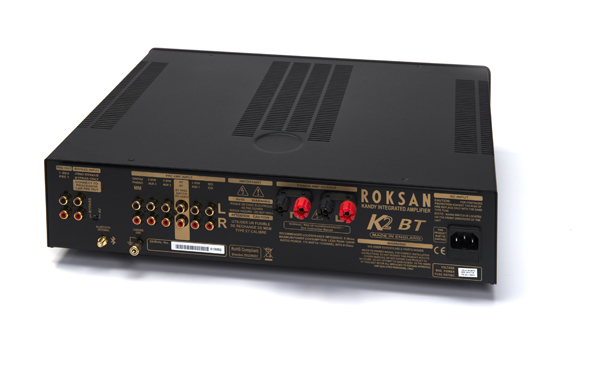 The Black Keys’ new record Turn Blue reminds me of some of the finest psychedelic tunes from the 1960s. The opening track “Weight of Love” has a very Clapton/Cream vibe. There’s something about British speakers and classic rock; they just feel right. I have used Harbeth’s Compact 7ES-3 and the Monitor 40.1 speakers as references for some time now and a few of their main characteristics seem worth noting:
The Black Keys’ new record Turn Blue reminds me of some of the finest psychedelic tunes from the 1960s. The opening track “Weight of Love” has a very Clapton/Cream vibe. There’s something about British speakers and classic rock; they just feel right. I have used Harbeth’s Compact 7ES-3 and the Monitor 40.1 speakers as references for some time now and a few of their main characteristics seem worth noting:
First, the midrange is spectacular; second, these speakers do an excellent job retrieving the timing information from whatever music you happen to be listening to; and third, even though the 40.1 doesn’t have prodigious amounts of bass (though, with a 13-inch woofer, it’s more than adequate), it does have a lot of life.
But enough about Harbeth. (More on that later.) While that brand gets much of the British-monitor love these days, there’s another player that’s not quite as popular but that is just as interesting, if not more: Sterling Broadcast began as a company repairing and refurbishing LS3/5A and other BBC-type monitors. It soon expanded to produce its own speakers, getting the license from KEF for new drivers in order to build a version of the LS3/5A, which was very well received.
Another Classic, Updated
The SB-88 accomplishes the same thing as Stirling’s version of the LS3/5A—this time as a revamped LS/AA speaker. A two-way design with an 8-inch woofer, the SB-88 is a British monitor through and through, from the thin-walled cabinets to the basic black grille that’s nearly impossible to remove. Just like the Compact 7, this speaker performs best on a pair of 19-inch-tall speaker stands, to get the right tweeter-to-listener height.
As with the Compact 7, I suggest a very dense stand, like the Sound Anchors I currently use, to best ground the speakers, resulting in a smoother and more extended low-frequency response. In my reference system, the Devialet 110 proves a perfect match for these speakers, offering grip and control that gives them a more modern sound. When paired with a low-powered tube or solid-state amplifier, the SB-88s lean more towards the warm, wooly sound often associated with British monitors. So, choose the amplifier you want to give you the mood you seek with these—they can go either way.
While the SB-88s provide a wide frequency response, they live up to their heritage, providing a lush yet natural midrange that helps most recordings sound better than they have a right to. In the day of hyper-detailed, hyper-real-sounding speakers from YG, Wilson and Magico, the Sterling Broadcast SB-88s are a wonderful experience, almost like your favorite form of comfort food. What they lack in resolving power, they more than make up for in natural presentation. Day in and day out, they remain incredibly user-friendly and non-fatiguing. Should this be what you’ve been searching for, these are the grail. If you’d like to keep the British sound but still want a modern feel, the Harbeth Compact 7 might be more your spot of tea, as staffer Mark Marcantonio reveals on the following pages…
Harbeth Compact 7ES-3 vs. Stirling SB-88
By Mark Marcantonio
Heritage: It’s a key component to how stereo equipment is designed and how it sounds. When it comes to speakers, BBC monitors arguably have the most famous lineage. Simple, thin-walled boxes designed to be placed on stands, these types of speakers add in a sonic signature of low coloration and flat measurements, which are the basics of a successful monitor. Two companies currently epitomize the BBC design: Harbeth and Stirling.
While direct comparisons are not the norm at TONEAudio, when a pair of Stirling SB-88s arrived for review, the obvious comparison to the Harbeth Compact 7ES-3 couldn’t be helped. Possessing a nearly identical cabinet size (20.5 by 10.7 by 12 inches for the Harbeths; 19.5 by 10.7 by 11.75 inches for the Stirlings), along with similar drivers and port layouts, these speakers present instant curiosity. Even grill removal on both models calls for patience and an old credit card. Besides veneers, the biggest differences are the flat front flange, sealed back panel, and dual binding posts of the SB-88, and the slightly rounded bevel, screwed-in rear panel, and single set of binding posts of the Compact 7.
True to their DNA, both models prefer slightly shorter stands for optimum performance—in this case, the 19-inch Sound Anchors. After a weekend playing with positioning, the results for the 9-by-12-foot room were identical, sans a 1/4-inch less toe-in for the SB-88. Two other rooms were used as well: an 11-by-18-foot family room and 14-by-18-foot living room. Powering the competitors is the 150-watts-per-channel Simaudio Moon i-7 integrated amp. Sources include the Rega RP1 with Ortofon Super OM 40 cartridge and Sim Moon LP 5.3 phono pre, and a MacBook running iTunes/Pure Music paired with a Sim Moon 300D DAC.
The SB-88s resolve with a sense of intimacy. Allen Stone’s bluesy vocals in a live recording of “Sleep” ache with emotional clarity. The tightness of the acoustic guitar strokes leaves little doubt as to technique. Yet, for all the purity of high frequencies, hiss and edginess are never spotted.
The midrange of the SB-88 continues the purity of signal, which is not surprising considering the design parameters of the BBC concept. Percussion is equally tight, with obvious definition between each piece of the drum kit. The strong piano-key strokes on Trixie Whitley’s “Breathe You in My Dreams” hold their own space next to her rich and complex vocals.
But the lower registers really give away the SB-88 as a monitor. The rich layering that bass brings to so many songs just never kicks in with the SB-88. The funk classic “Fire” by the Ohio Players, with its foot-tapping bass line, gives only a hint of its existence. The lack of bottom-end has always been mini-monitor territory. No matter which of the three rooms are utilized, I’m left wanting so much more.
Interestingly enough, both speakers sound their best in nearly the same position in all three listening rooms, another nod to their lineage. However, when the music begins to play on the Compact 7s, the difference is palpable. The Harbeths bring more bass grunt and detail. Listening to music with any sort of low end through the Compact 7s is a whole different experience. The bass guitar in “Fire” resolves and thumps, matching the speaker’s 46-Hz low-end rating.
The upper frequencies of the Harbeths offer a wider imaging sweet spot, while the signal coming forth just has more of everything: detail, depth, spaciousness, etc. A sense of soulfulness is present on the Compact 7s that isn’t there with the SB-88s. Through the Harbeths, the xylophone near the beginning of Steely Dan’s “Aja” rings from the deepest regions of the speaker cabinet. And Trixie Whitely’s vocals take on a sense of aged richness, much like a fine wine.
As with the SB-88s, the Compact 7s take advantage of the space in the cabinet and that in between the speakers, but the latter speakers extend all the way to the walls. Acoustic treatments do come into play, though I find no need to reset the position of the GIK panels. The music comes to the listener rather than he or she needing to step into the musical space. There’s no need to check with head/ear position to confirm the sweet spot with the Harbeths—just sit back and enjoy the experience.
The Compact 7s reproduce two of the hardest instruments for speakers—the piano and the human voice—with a naturalness and clarity that stuns. The piano notes roll over the music like waves. Jan Gunnar Hoff’s piano on a vinyl version of his album Living cascades throughout the room. Tonal structure and timbre are beautifully accurate and as non-fatiguing as one can rightfully expect at this price point.
Listening to pre-Auto-Tune vocal performances demonstrates the additional resolution that the Compact 7s have over the Stirlings. From Ella Fitzgerald to a young Melissa Etheridge and from Dean Martin to Kris Kristofferson, the Compact 7s deliver a complete vocal performance, including the imperfections that make each singer’s voice an honest and terrific treat.
The Final Tally
While the Stirling SB-88 is a nice speaker, with all the good intentions of the BBC monitor tradition, it cannot match the broad, rich sonic experience that the Harbeth Compact 7ES-3 provides. Alan Shaw (Harbeth owner and speaker designer), the BBC monitor crown belongs to you.
Stirling Broadcast SB-88
$3,450 – $3,850, depending on finish
Harbeth Compact C7ES-3
$3,690 – $3,990, depending on finish



 British hi-fi buffs know Roksan Audio as a company that offers extraordinary value and sonics that challenge far pricier competitors. The company, located just northwest of London, takes a complete-system approach, with analog and digital sources, amplification, speakers, cables, and power supplies among its product lineup—and it is currently making a push into the North American market.
British hi-fi buffs know Roksan Audio as a company that offers extraordinary value and sonics that challenge far pricier competitors. The company, located just northwest of London, takes a complete-system approach, with analog and digital sources, amplification, speakers, cables, and power supplies among its product lineup—and it is currently making a push into the North American market.












